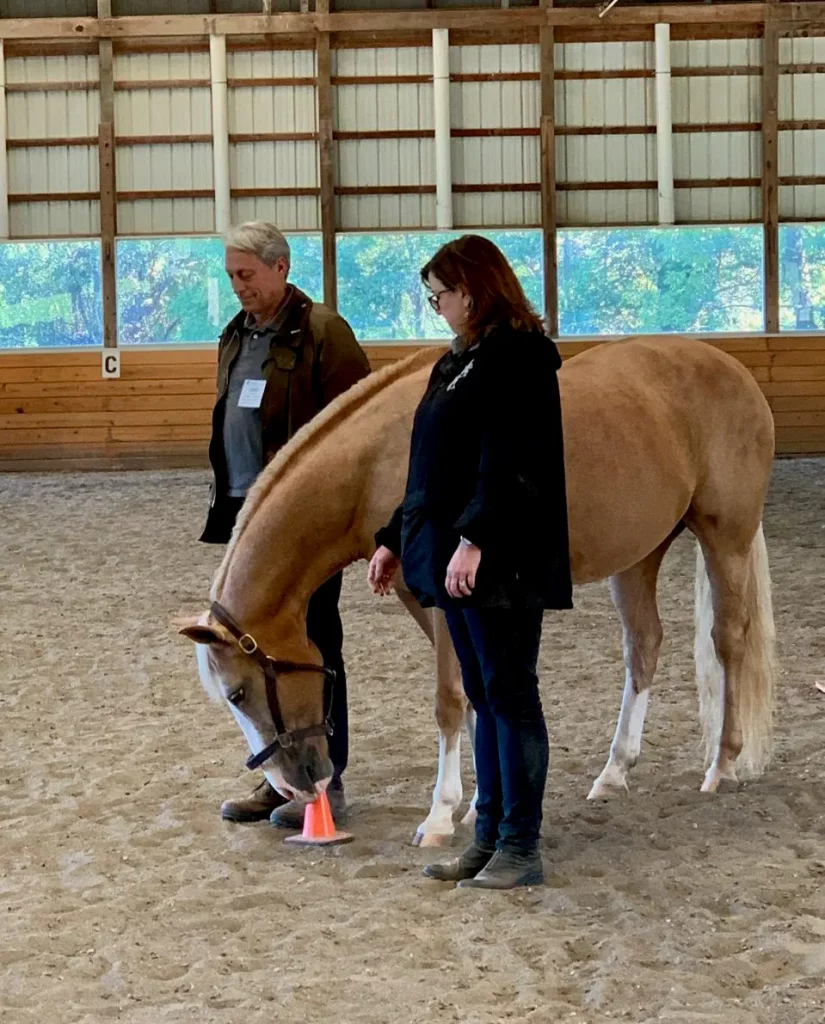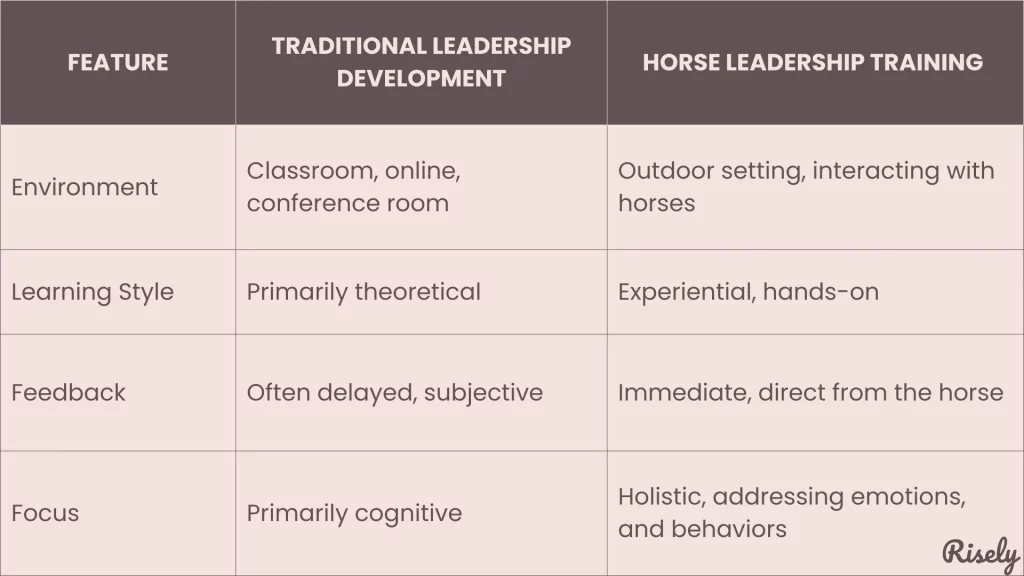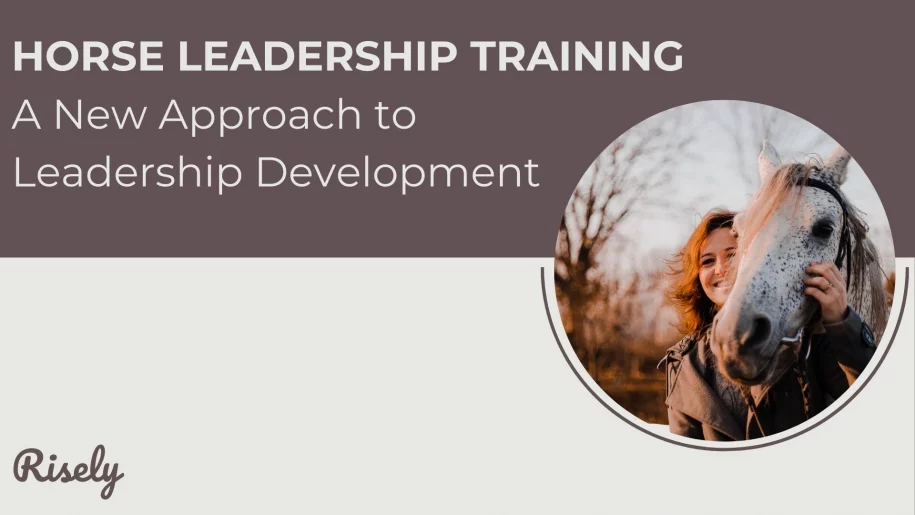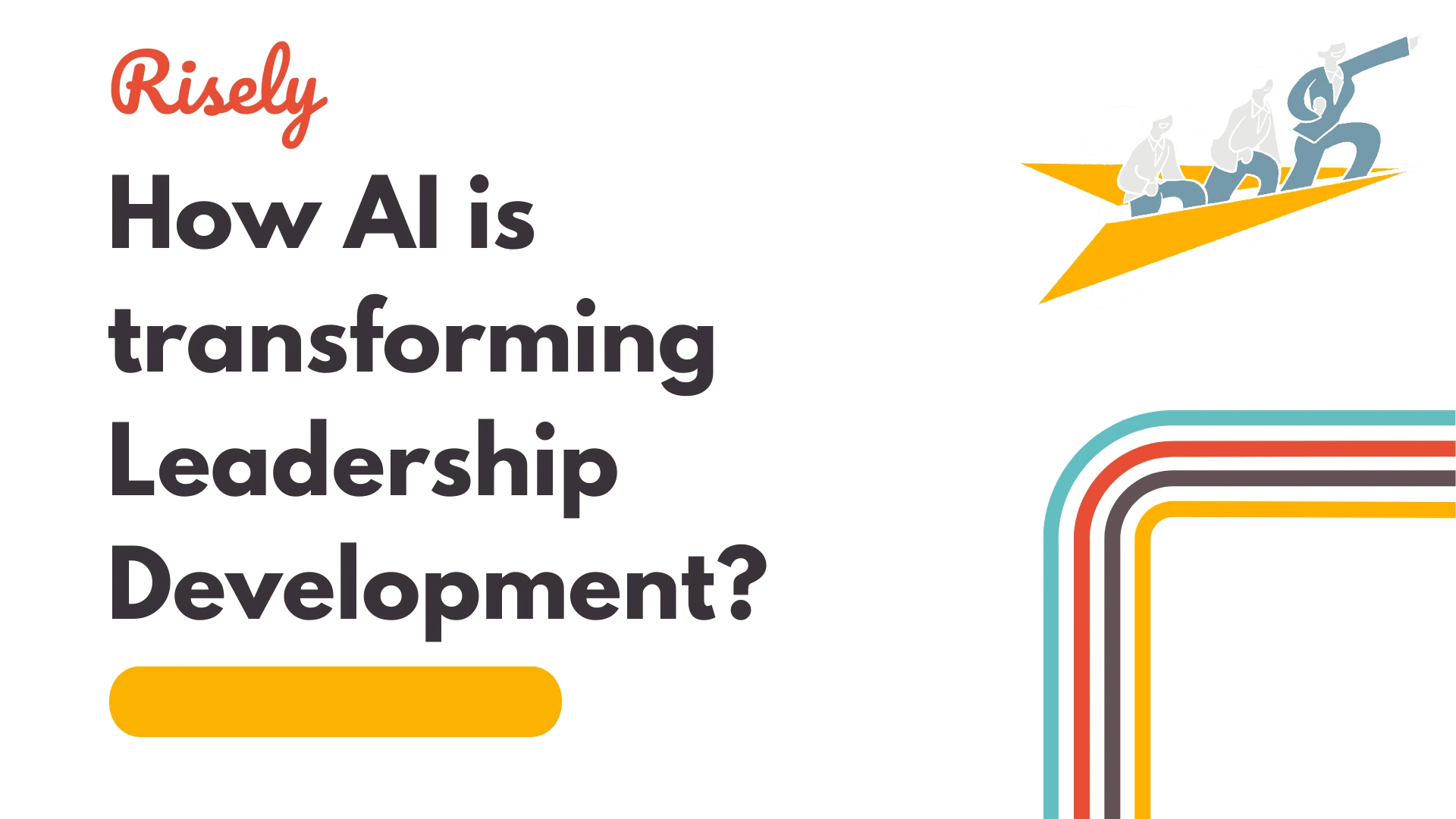Horse Leadership Training: A New Approach to Leadership Development
Leadership development and training is suffering heavy stress under today’s business environments. HR and L&D professionals like you are constantly pursuing new, efficient, and innovative ways of emotionally intelligent and authentic leadership. Here is one such very effective transformative approach gaining popularity under the name of Horse Leadership Training. It is a hands-on, experiential method, based on the natural wisdom of horses, that helps leaders sharpen their communication, emotional intelligence, and teamwork skills in an absolutely unique way. In this blog, we will dive deep into Horse Leadership Training with insights from Janis Cooper, the director of Leadership and Staff training at Best Friends Animal Society.Understanding Horse Leadership Training
In the 14th episode of Risely’s podcast- RiseUp Radio, Janis explains how to craft effective learning experiences through Horse Leadership Training or what she calls, Equine Facilitated Learning (EFL). EFL has become increasingly popular for training as it engages all of a person’s senses. It is a profound and memorable method that supports immediate change.What is The Science Behind Equine Leadership Development?
Dogs are known for their loyalty and friendliness and monkeys are the closest living relatives to humans. So, why horses? The success of equine-assisted experiential learning on leadership development isn’t built on experience alone but is supported by sound science in both animal behavior and human psychology. As an HR or L&D leader, you understand the importance of blending practical learning with evidence-based insights. Horses are social animals that naturally herd together for survival. This characteristic makes them highly sensitive to minute changes in their surroundings, and to the feelings of their acquaintances, making them an excellent partner for leadership training. An Equine-Assisted Learning (EAL) session provides participants with immediate, unfiltered truthful feedback from the horses. The way a horse responds to them reflects their own emotions, intentions, and leadership style—like looking in a mirror. The raw feedback provided reveals blind spots, biases, or behaviors that most likely are holding them back from being totally effective leaders. Observing how horses interact within their herd provides powerful lessons on teamwork, conflict resolution, and the importance of setting clear boundaries and expectations. These can easily be applied to the workplace to help your team improve their communication, collaboration, and overall performance.The Core Principles of Horse Leadership Training
At the center of Horse Leadership Training are a few key principles that help develop important leadership skills:- Authenticity & Congruence: Horses can easily notice when a person’s words and actions do not match. This helps people show their true selves and align their thoughts, feelings, and actions.
- Clear Communication & Boundaries: Horses are prey animals. They need clear communication and set boundaries to feel safe. During EAL sessions, participants learn how to communicate their goals clearly and set healthy boundaries to build trust and respect.
- Emotional Intelligence & Regulation: Horses excel at reading human emotions. This means participants need to have emotional intelligence and know how to regulate their feelings. They learn to develop self-awareness, empathy, and manage their emotions well, especially in tough times.
What Makes Horse Leadership Training Effective for HR/L&D Professionals?
For HR and L&D professionals like you, Horse Leadership Training is a powerful way to create real, lasting change in your organization’s leaders. Unlike traditional methods that often focus on theories and simulations, this training puts your team in real, hands-on situations where they must lead, communicate, and adapt—right in the moment. Working with horses requires leaders to step out of their comfort zones and sharpen their emotional intelligence, decision-making, and communication skills. What makes this especially valuable for you is how deeply it engages participants. They aren’t just sitting through another lecture—they’re immersed in an experience they’ll remember long after the training ends. The immediate feedback from horses shows leaders exactly how their behavior impacts others, which helps them understand and adjust in real time.Janis shared a story of someone seeking help with leadership skills. This person was paired with a horse named Andrew, with the task of leading him from point A to B without touching or bribing him—she had to rely solely on influence. Initially, Andrew followed her, but midway, he stopped. When asked why, she admitted that she’d begun doubting herself at that moment. She realized that the same thing happens at her workplace; people don’t follow her because she lacks confidence.
This kind of direct, memorable learning experience leads to real behavioral change that sticks, making your leadership development efforts much more impactful when your team faces tough situations back in the workplace.Implementing Equine Leadership Development in Your Organization
Incorporation of Horse Leadership Training in your company’s human resources and learning and development strategy can be a game-changer, and it’s more flexible than you might think. You begin by taking your employees to a one-day workshop and introducing them to the core principles of horse leadership training. That way, they are able to experience this unique interpersonal link between leadership and working with horses, which will come in very handy for them in their respective roles.
Horse Leadership Training: A Strategic Development Tool
Organizations like yours are increasingly recognizing the strategic value of incorporating equine leadership programs into their talent development initiatives. These L&D strategies offer much more than individual growth—they create stronger teams, improve communication, and foster a more positive, productive work environment. Here’s a concise comparison of traditional leadership development approaches and equine-assisted learning:
Conclusion
Horse Leadership Training offers a refreshing approach to leadership development, utilizing horse-related principles to enhance your team’s skills. As an HR or L&D professional, you can leverage the Equine Leadership Program to foster genuine change and elevate teamwork within your organization. Safety during training sessions is crucial, so implementing solid measures will ensure a positive experience for everyone involved. By embracing this innovative method, you’ll cultivate strong leaders and a culture of collaboration and growth—transforming your organization for the better!Reimagine L&D for your team with Risely’s free template.
Grab your copy and start rethinking L&D strategies into tools of your success.
AI and Leadership Development: Driving Synergy for Growth
AI and Leadership Development: Driving Synergy for Growth You know the frustration all too well. Your organization invests thousands in…
How Are AI Learning Platforms Transforming Leadership Development?
How Are AI Learning Platforms Transforming Leadership Development? As an L&D leader, you’re likely familiar with this frustrating reality: 82%…
5 Essential AI Skills for L&D Leaders
5 Essential AI Skills for L&D Leaders According to LinkedIn’s 2025 Workplace Learning Report(1), 71% of L&D professionals are now…
How to Create a Course with AI: A Guide for L&D Professionals
How to Create a Course with AI: A Guide for L&D Professionals According to a McKinsey survey(1), only 11% of…
Building an Ultimate Leadership Development Action Plan
How to Build a Leadership Development Action Plan? Having a strong Leadership Development Action Plan is more critical than ever…


